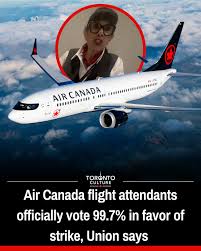Air Canada Flight Attendants Initiate Strike

Introduction
The ongoing conflict between Air Canada and its flight attendants has escalated into a strike that has significant implications for travelers across the country and beyond. This labor dispute, rooted in wage and work condition negotiations, highlights the broader issues of worker rights and employment conditions in the airline industry, making it a topic of great relevance for both employees and passengers alike.
Background of the Strike
On October 15, 2023, flight attendants represented by the Canadian Union of Public Employees (CUPE) voted overwhelmingly in favor of a strike action after negotiations with Air Canada reached an impasse. The primary issues at stake include demands for better wages, improved working conditions, and enhanced benefits. CUPE argues that the current wage structure does not reflect the increasing cost of living and the demanding nature of the work, especially considering the industry’s recovery from the pandemic.
Impact on Travel
Since the strike commenced, Air Canada has been forced to cancel numerous flights, leading to widespread disruptions for travelers. Many passengers have reported long wait times and significant delays. The airline has implemented contingency plans, including the re-routing of passengers and increasing customer service personnel to manage the fallout. However, these measures have not completely alleviated the frustrations felt among travelers.
Response from Air Canada
In response to the strike, Air Canada has expressed disappointment but remains open to ongoing discussions with labor representatives to resolve the issues. The airline has stated that they are committed to reaching a fair agreement that recognizes the contributions of its flight attendants while ensuring the company’s long-term viability.
Community Support and Concerns
Public sentiment seems divided. While many sympathize with the flight attendants and support their call for better conditions, others are frustrated with the disruptions caused by the strike. Labor experts suggest that public support for workers is critical in such disputes, especially in an industry where customer service is paramount.
Conclusion
The strike by Air Canada flight attendants marks a significant moment in the ongoing narrative of labor relations within the airline industry. As negotiations continue amidst the strike, the outcome will likely set a precedent for other airlines and their employees. Observers believe that if both sides can find common ground, it could lead to not only a more sustainable work environment for flight attendants but also a more resilient airline capable of better serving the public in the future. Travelers are encouraged to stay informed about their flight statuses and consider flexible arrangements during this period of uncertainty.









